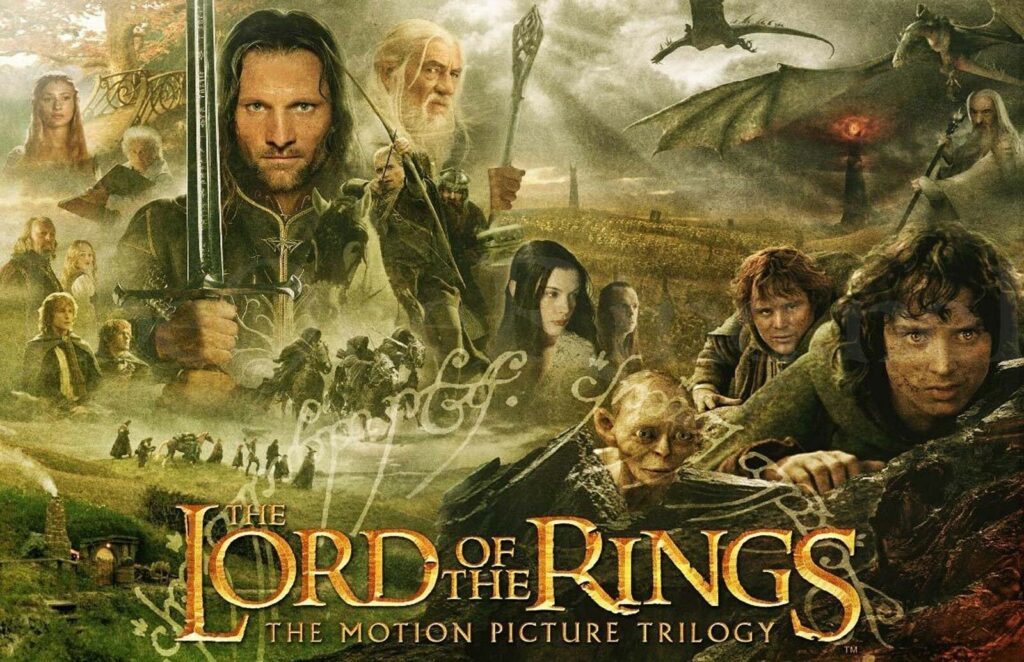Peter Jackson’s Lord of the Rings at 20 (Part One)

Twenty years ago this week, Peter Jackson’s The Lord of the Rings: The Return of the King hit the theaters completing his take on J.R.R. Tolkien’s magnum opus. These three films are cared for deeply and fought over bitterly by fans of Tolkien (#JusticeForBombidil). After twenty years they are still being discussed and critiqued, praised, and condemned. Peter Jackson is as often lionized as he is vilified but there is no denying the man made something magnificent.
The making of the films was a saga in and of itself. Even before The Return of the King was published in 1955, Hollywood was sniffing around Tolkien’s masterpiece. Tolkien was at first amenable to the idea but held on to his rights until he saw the first treatment. Those encounters left the great man of letters reeling in horror. Walt Disney’s was apparently the worst. There appears to be an unbreakable codicil in Tolkien Estate strictly prohibiting the Walt Disney Company from EVER having anything to do with a Tolkien intellectual property while it remains under copyright protection.*
When the Beatles were at the height of their popularity, they were ridiculously keen on the idea of making Lord of the Rings. Lennon would play Gollum, Paul McCartney would play Frodo, George Harrison would be Gandalf and Ringo Starr would play Sam. The Fab Four tried to get Kubrick on board who said that (a) it was unfilmable with current technology and (b) Tolkien will never agree to it. He was right about that last part, J.R.R. gave it such a hard thumbs down it dented the table.
After his passing, Christopher Tolkien proved a rabid guard dog of his father’s legacy. John Boorman and George Lucas were interested in the property but those projects eventually turned into Excaliber and Willow. Some unlicensed productions got made here and there, there was a Finnish version of The Hobbit and a Soviet version of The Fellowship of the Ring. There was a BBC radio production of Lord of the Rings (found here).
Finally, Rankin Bass’ (which is to say Studio Topcraft’s) version of the Hobbit was broadcast in 1977. Ralph Bakshi’s The Lord of the Rings was released in 1978, where it was seen by a young Kiwi named Peter Jackson who decided he just had to read the books to find out what happened next in the story.
Fast forward to the late 1990s and Peter Jackson has the kind of up-and-comer reputation that tended to attract the interest of Oscar whore, Harvey Weinstein. A Lord of the Rings adaptation had recently been brought back to life over coffee cups in Hollywood and Jackson snatched at the brass ring greedily.
Casting was a major headache and something of a self-inflicted one. It was the usual conflict between a director that wants to use certain actors, studios wanting movie stars instead of actors, and the actors themselves stepping on landmines. Gandalf was the biggest problem, Jackson wanted Patrick MacGoohan, Weinstein wanted Daniel Day-Lewis, and then Morgan Freeman. Weinstein also wanted Lord of the Rings cut down to one movie. He gave Jackson an ultimatum and the Kiwi walked.
Truth be said, things like this happen all the time in Hollywood and usually nothing comes from them. There are too many ways they can die in development and most of them do. Think of it like a train switch yard, where cars are constantly being assembled and then removed and changed around until eventually there is no train left. But once in a while, it’s “All aboard!” And the train leaves the station.
The project looked doomed yet again but then the Rohirrim charged over the hill in the form of New Line Cinema president Robert Shaye. It turned out the Lord of the Rings was something of a white whale for him. As for a single movie? Unthinkable! It had to be a trilogy and a grand one at that. The scope of the project was expanded exponentially. Weta got back to the work on props.
Weta created 1,800 Orc body suits to go with 10,000 Orc heads. They spent a year creating hobbit feet that would look like large, furry feet yet act as shoes for the actors. In total, 1,800 pairs were used by the four lead hobbit actors during production. Actors went in for face casts to create pointed ears and false noses. Most extensive was Gimli’s, it took four hours a day to get John Rhys-Davies into his makeup.
Rhys-Davies was one of the few actors that worked out the way Jackson had wanted. After failing to lock MacGoohan in as Gandalf, he tried again with Denethor. Number 6 managed to talk his way out of yet another good job through the power of his grumpiness. Christopher Lee on the other hand had been pining for the part of Gandalf for fifty years. He took a job with The New Adventures of Robin Hood just to prove he could play a wizard and ambushed Jackson in an airport, all six-foot-five of him in full wizard regalia. Jackson was delighted to have him but sadly not as Gandalf. The wrangling over that key role had come down to Patrick Stewart and no one else. The thing was, when Jackson and the studio chief saw him playing opposite Ian McKellen in a film clip, they both knew a better choice was available. Galadriel on the other hand was much easier, Jackson had wanted Cate Blanchett for the role and she couldn’t have agreed more. She was practically cosplaying.
The filming itself wasn’t an Apocalypse Now level of production hell but it was certainly long and demanding on everyone. The entire trilogy was shot at once.
But that will have to be another post.
*If only he knew about Amazon.

